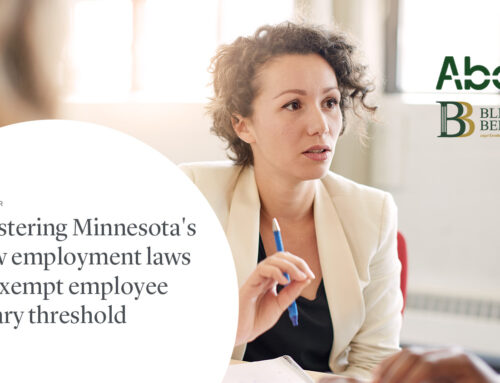After two years of varying restrictions, the COVID-19 eviction moratorium in Minnesota will be fully phased out as of June 1, 2022. Since October 12, 2021, Minnesota law has prohibited landlords from evicting tenants for nonpayment of rent if the tenant had a pending COVID-19 emergency rental assistance program. Landlords will soon be able to move forward with any type of lawful eviction.
Even though the moratorium phase-out will be completed, there are still state, federal and local laws that apply to the eviction process. It is important for landlords to ensure that they are following the law when an eviction becomes necessary. The following are some issues that can result in increased costs, delays, penalties, and/or increased risk of being sued by a tenant:
1. Not providing notice before filing an eviction. While state-imposed restrictions have ended, some properties are subject to federal and/or local notice requirements before a landlord can file an eviction for nonpayment of rent.
2. A business filing an eviction action without an attorney. Generally, if the landlord is a business entity, Minnesota law requires that a licensed attorney be involved. The attorney must sign the eviction complaint and appear in court. (Note: Hennepin County Housing Court has a limited exception to this requirement in specific circumstances.)
3. Not providing sufficient notice of an eviction hearing. For typical evictions, the summons needs to be served on the tenant at least 7 days before the eviction hearing date. If the tenant is unable to be personally served after two attempts with at least one attempt being between 6:00 p.m. and 10:00 p.m., the complaint needs to be posted at the residence and additional steps need to be taken to ensure proper service. This includes filing an affidavit with the district court and mailing the complaint to the tenant. If an expedited hearing request is granted, absent a court order for good cause shown, the summons needs to be served within 24 hours of the time it was issued.
4. Removing the tenant without an eviction. The way landlords remove a tenant from a residential unit is either by the tenant voluntarily leaving or the landlord bringing an eviction action. If the eviction is granted, the court issues a document authorizing the sheriff to remove the tenant from the property. A landlord cannot forcibly remove a tenant on his or her own. This includes not only removing a tenant through the use of physical means but also by changing the locks or turning off utilities.
If you have questions about a tenant matter you can contact one of Blethen Berens’ landlord attorneys. Interested in hearing about recent changes in the law and learning about common landlord legal issues, contact us to sign up to attend our annual landlord seminar to be held this November!


